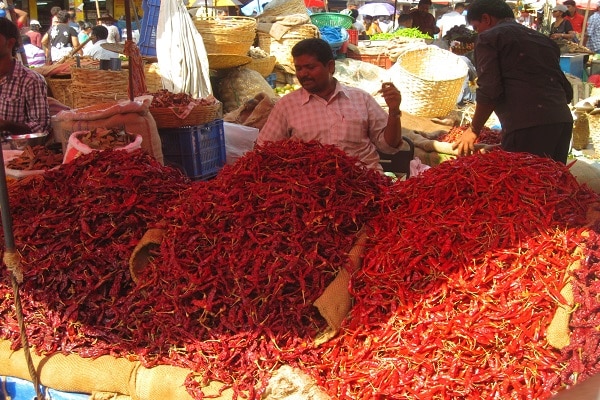There has been an increase in the demand for the commodity globally. It is propelling the farmers to increase their acreage for the produce.
Here is a quick overview of the current trends in chilli for the major countries.
India
- The primary harvest of the crop is complete. However, despite the increase in acreage, the production for the calendar year 2022 is low. It is due to the disease and pest infestation the cop experienced during the growth period.
- As a result, the arrival of a good quality crop is poor in the market. Also, there is low arrival of pesticide residue crops in the market.
- The price has been firm for the spice since March and across April.
- The export demand is weak, and the year 2022 will be tight for the spice in India.
US
- The country had experienced a significant increase in chilli and paprika demand, so it was good news when farmers could secure significant planting acreage for the crops.
- It is expected the 2022 growers will be able to need the increased demand for the products with local produce.
- Direct planting and transplantation are on in the growing regions of West Texas, Southwest Nee Mexico and the northern part of Chihuahua Mexico.
- The planting is expected to be done under favourable weather conditions in the next couple of weeks.
- Earlier, the increase in fertiliser cost, labour price and competition from the acres producing cotton caused a significant price increase for the 2022 crop. The increase in the demand for homegrown organic chillies and Paprika is moving the farmers to increase their acreage for the products.
- The green chillies for 2021-22 are meeting the projected volumes. Likewise, the spring chillies look healthy, and there is no shortfall in the volume either.
- The harvesting is delayed due to the cool temperatures slowing the crop’s maturity. But it has not affected the crops with any seedling disease despite being directly seeded.
- The summer crop transplants are also reported on time and in good condition.
- The processors have supported the chilli and paprika farmers with increased costs.
Mexico
The speciality chillies production in Mexico will be similar to or higher than in 2021. However, it is currently facing a challenge due to the competing crops and higher crop prices.
China
- The outbreak of COVID-19 continues to put pressure on the supply chains, thus affecting the availability of raw materials in the markets. It also impacts the trade, and the processors are looking for options to find non-Xinjiang materials. But the transparency of the origin of the materials continues to be a challenge.
- The increase in the energy price, exchange rates and labour costs pose a challenge in finding suitable crops as the warmer weather sets in.
- The price of Chinese chilli is expected to move up given the low production of the Indian chillies.
- It was predicted the crop outcome would be similar to 2021, but until the harvest is complete, a clear picture of the quantity for 2022 is unclear.
Peru
Compared to last year, the production of Paprika is 20 per cent less, and it is due to the reduced planting area and lower yield because of higher input costs. As a result, the ASTA values are also predicted to be blower than usual.
Other Countries
- African countries are reported to have increased their acreage for higher production. The harvest will be done in the later months of 2022.
- Israel continues to be a marginal to moderate producer of the crop.
- Spain doo produces Paprika marginally but continues to the processing location for imported Paprika.
Prediction
- Chillie and Paprika will be in short supply for 2022, as there is no actual inventory available to know the actual production.
- The Uyghur forced labour Act and its enforcement force US companies to look for alternate origins and supply sources.
- Due to Fertilizer costs, labour increases, gas prices, and general inflation, all paprika and chile products will increase double-digit costs.










